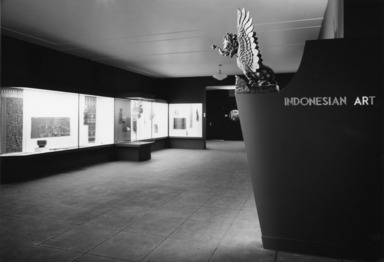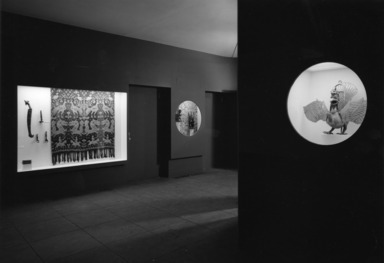

New Installations of Primitive Art: Indonesian, Ainu, Eskimo & Philippine Art, September 29, 1959 through 1959 (date unknown) (Image: AON_O1959i001.jpg Brooklyn Museum photograph, 1959)
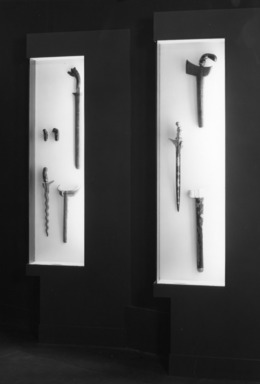
New Installations of Primitive Art: Indonesian, Ainu, Eskimo & Philippine Art, September 29, 1959 through 1959 (date unknown) (Image: AON_O1959i002.jpg Brooklyn Museum photograph, 1959)
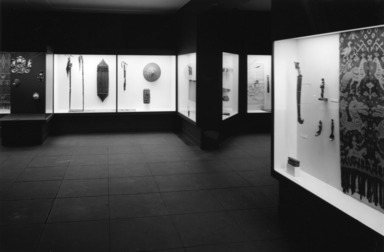
New Installations of Primitive Art: Indonesian, Ainu, Eskimo & Philippine Art, September 29, 1959 through 1959 (date unknown) (Image: AON_O1959i003.jpg Brooklyn Museum photograph, 1959)
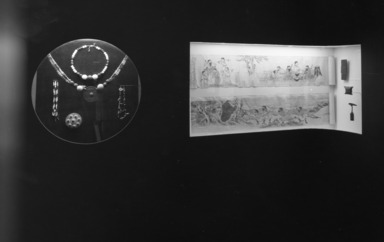
New Installations of Primitive Art: Indonesian, Ainu, Eskimo & Philippine Art, September 29, 1959 through 1959 (date unknown) (Image: AON_O1959i004.jpg Brooklyn Museum photograph, 1959)

New Installations of Primitive Art: Indonesian, Ainu, Eskimo & Philippine Art, September 29, 1959 through 1959 (date unknown) (Image: AON_O1959i005.jpg Brooklyn Museum photograph, 1959)
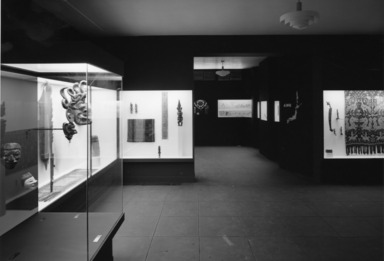
New Installations of Primitive Art: Indonesian, Ainu, Eskimo & Philippine Art, September 29, 1959 through 1959 (date unknown) (Image: AON_O1959i006.jpg Brooklyn Museum photograph, 1959)
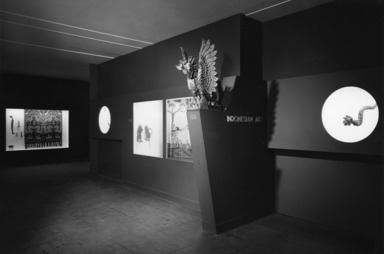
New Installations of Primitive Art: Indonesian, Ainu, Eskimo & Philippine Art, September 29, 1959 through 1959 (date unknown) (Image: AON_O1959i007.jpg Brooklyn Museum photograph, 1959)
New Installations of Primitive Art: Indonesian, Ainu, Eskimo & Philippine Art
-
September 14, 1959
A new permanent gallery opens September 29th on the main floor of the Brooklyn Museum. Featuring a collection of unusual Indonesian art, the installation in red and black was designed and executed by Rochelle Estrin and Arline Meyer, winners of the Museum’s 1959 Fellowship awards. This significant phase of the unique Fellowship program completes the year of study and training for the two New York City women.
The new gallery of Indonesia’s rich and varied culture also displays many fine examples from Borneo, Sumatra, Java and Bali with an outstanding representation of sculpture, textiles, weapons and masks from the Museum’s collection. But special emphasis of the dramatic installation is on the Wayang, which is a combination of the dance, drama, and visual arts of Indonesia.
Wayang is an elaborate form of puppet theatre originally created to bring the shadows or souls of departed ancestors back into the world. This fascinating theatrical art of Indonesia is represented by fanciful Wayang puppets including those fashioned from dried buffalo hide, chiseled in intricate filagree patterns and colorfully painted, as well as the Wayang Golek three-dimensional puppets, hewn from soft wood and elaborately costumed in sarongs of handwoven native textiles.
In addition to the bizarre puppets, there is a traditional garuda bird lamp which is used as a source of light for the shadow plays and, to further illustrate the great variety of Indonesia’s art, there are portrait statues of the dead from the islands of Nias and Leti, carved of wood and created to serve as dwelling places for the souls of the departed spirits. A group of traditional polychromed wood temple ornaments show the mythical serpents and beasts in the distinctive Hindu-Indonesian style which came from the Island of Bali.
Fellow award winner Rochelle Estrin, interviewed during the final arrangements in the new gallery stated that batik and ikat textiles are among the most magnificent products of Indonesian art. Pointing to the two outstanding examples, Miss Estrin said, “Miss Meyer and I selected the handsome ikat shroud from the island of Sumba, and a batik cloth of characteristic conventionalized patterns from Java.”
Arline Meyer, directing the lighting on a display of weapons, added, “we also felt the exhibition should include the Museum’s superb examples of the Kris, the best known weapon of Indonesia. They are an important part of ceremonial costumes and Wayang and are mostly noted for the unusual carving in the handles and the elegantly designed blades.”
Completing final touches in the gallery, the two women enthusiastically discussed their year-long apprenticeship at the Brooklyn Museum. It was from their written applications that each was selected to receive the $5,000 tax-free fellowship for study in every department of the Museum - decorative arts, Oriental and Egyptian Arts, prints and drawings, paintings, costumes, cataloging, public relations and education.
The two young women will be present for the invitational opening of the gallery from 5 to 7 p.m. on September [?]. This preview showing is for members of the Brooklyn Museum and their special guests, invited to meet Miss Estrin and Miss Meyer.
Brooklyn Museum Archives. Records of the Department of Public Information. Press releases, 1953 - 1970. 1959, 035-37.
View Original
